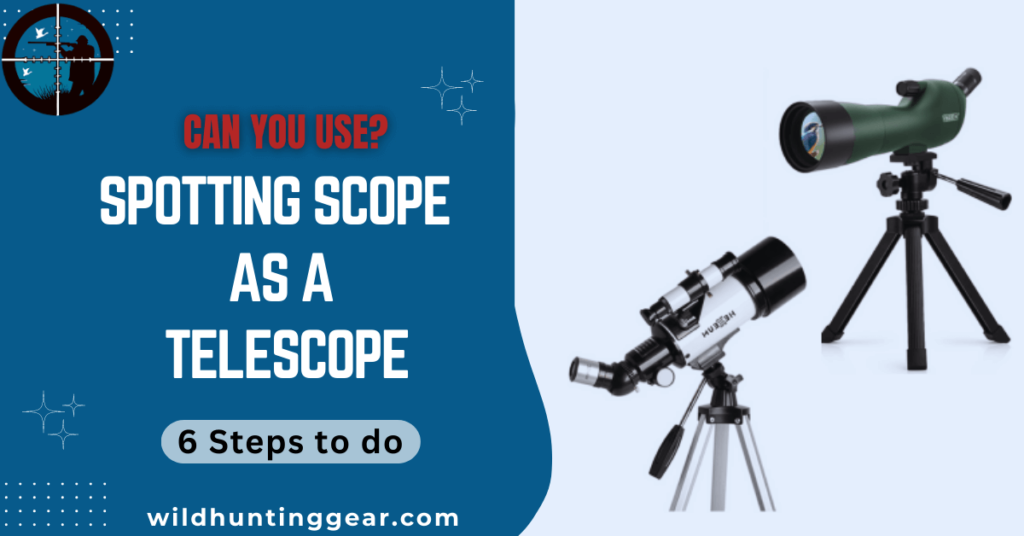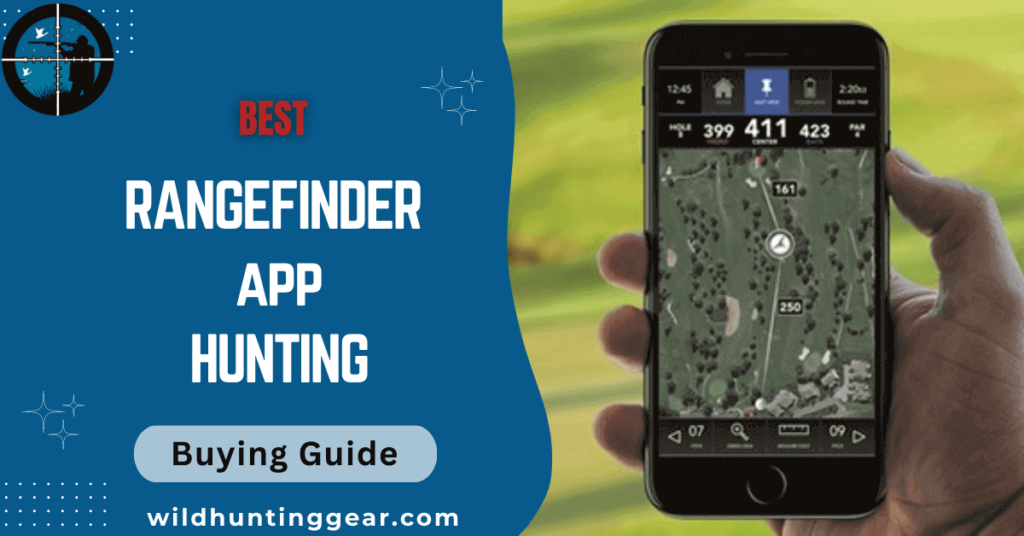Are you a budding astronomer looking for an economical way to stargaze? Or perhaps you are a birdwatcher on the hunt for the perfect telescope. Whichever group of inquisitive minds you fall into, it’s worthwhile to investigate whether or not spotting scopes can be used as telescopes.
In this blog post, we’ll explore what exactly spotting scopes and telescopes are, how they differ from each other, and finally answer the age-old question: can you use a spotting scope as a telescope? With our helpful guide and some patience, soon enough even complex cosmic mysteries will be at your fingertips!
Understanding Spotting Scopes and Telescopes
Spotting Scopes
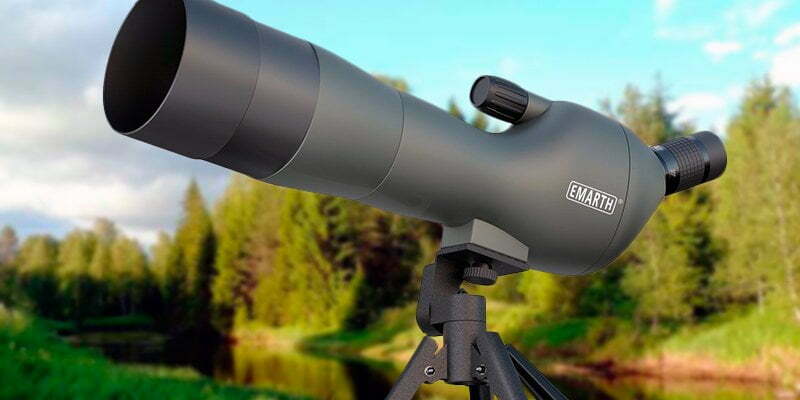
Spotting scopes are small, portable high-power telescopes with added optics to present an erect image, optimized for the observation of terrestrial objects. They are used for various outdoor activities such as birdwatching and hunting. Spotting scopes are often used in conjunction with a tripod for stability.
Telescopes
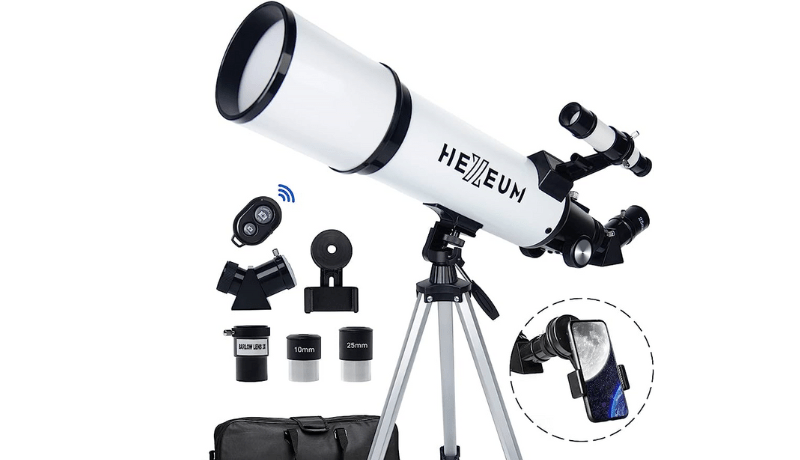
A telescope is an optical instrument using lenses, curved mirrors, or a combination of both to observe faraway objects, typically celestial bodies like stars, planets, and galaxies. Telescopes can significantly magnify objects and enhance the light coming from them, enabling us to see these distant objects clearly. They are a fundamental tool in astronomy, opening the skies to professional astronomers and amateur stargazers alike.
Can you use a spotting scope as a telescope?
The answer is yes, but with some limitations. Spotting scopes can be used as telescopes to observe celestial objects including the moon, planets, and stars. However, the image quality and resolution may not match those of a dedicated astronomical telescope. If you’re considering using your spotting scope for stargazing, here are a few things to keep in mind:

- Image Orientation: Spotting scopes are designed to provide an upright image suitable for terrestrial viewing, unlike astronomical telescopes that often present an inverted or mirrored view. This might give a different viewing experience when observing the night sky.
- Magnification: While spotting scopes can offer high magnification, their smaller aperture size compared to telescopes can limit the amount of light they gather. As a consequence, spotting scopes might not perform as well when observing faint celestial objects.
- Mounting: Using a spotting scope to view celestial objects can be uncomfortable without the right mount. Most spotting scopes are designed to be used with a horizontal handle while most astronomy mounts have vertical handles for easier object tracking across the sky.
Optical Differences Between Spotting Scopes and Telescopes
Spotting scopes are primarily designed for terrestrial observation, while telescopes are built for stargazing. Therefore, spotting scopes often have a prismatic design, whereas telescopes use either lenses or mirrors in their construction.
Spotting scopes often have fully multi-coated optics to enhance light transmission, color rendition, and overall image quality. Telescopes, on the other hand, have specific coatings on their lenses or mirrors depending on their construction type.
Field of view and image quality differences
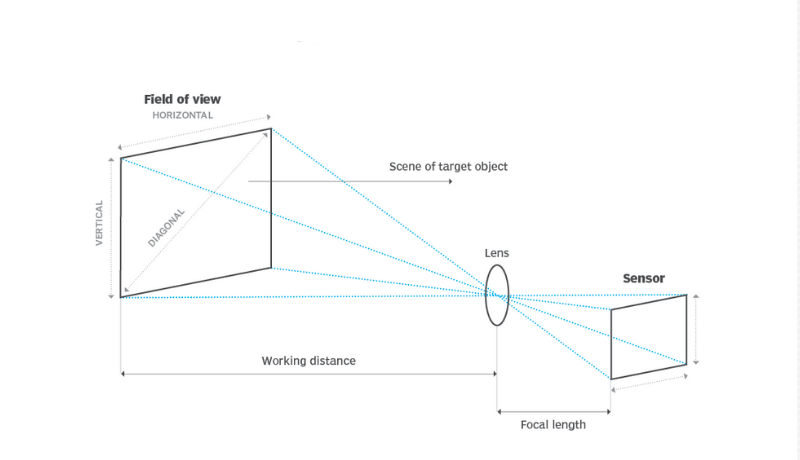
Spotting scopes generally offer a wider field of view, which is essential for tracking moving objects on land. Telescopes provide a narrower field of view but excel at revealing fine details of celestial bodies.
Telescopes have superior light-gathering abilities due to their larger apertures and are better suited for low-light celestial observation. Spotting scopes, while adequate for daytime use, may struggle in low-light conditions due to their smaller apertures.
How to Using a Spotting Scope as a Telescope
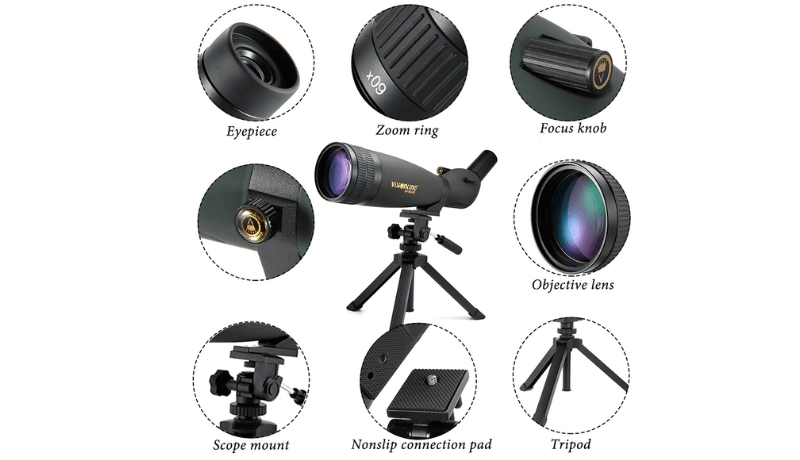
If you wish to use your spotting scope as a telescope, here are some steps to guide you:
- Choose an Appropriate Spotting Scope: Not all spotting scopes are equal when it comes to astronomical viewing. Pick one with a larger objective lens as it can gather more light, which is crucial for observing celestial bodies. Also, consider a spotting scope with a high magnification power as it can bring distant objects into clearer view.
- Secure Your Spotting Scope on a Tripod: Stability is key for clear viewing. Use a sturdy tripod to minimize vibrations that can blur the image.
- Align Your Spotting Scope: Point your scope towards the part of the sky you want to observe. Using a star chart or a stargazing app can help you identify different celestial bodies.
- Adjust Focus and Magnification: Start with the lowest magnification to locate your targeted object, then gradually increase the magnification for a detailed view. Use the focus knob to bring the image into sharp focus.
- Use Proper Eye Relief: Ensure you keep an appropriate distance from the eyepiece to get a comfortable, full view.
- Care for Your Spotting Scope: Always keep the lens caps on when not in use to protect the optics from dust and other potential damage. Never leave your spotting scope exposed to extreme weather conditions or direct sunlight.
Although a spotting scope might not offer the same celestial viewing experience as a dedicated telescope, it can still be a fun and affordable way to start your stargazing journey.
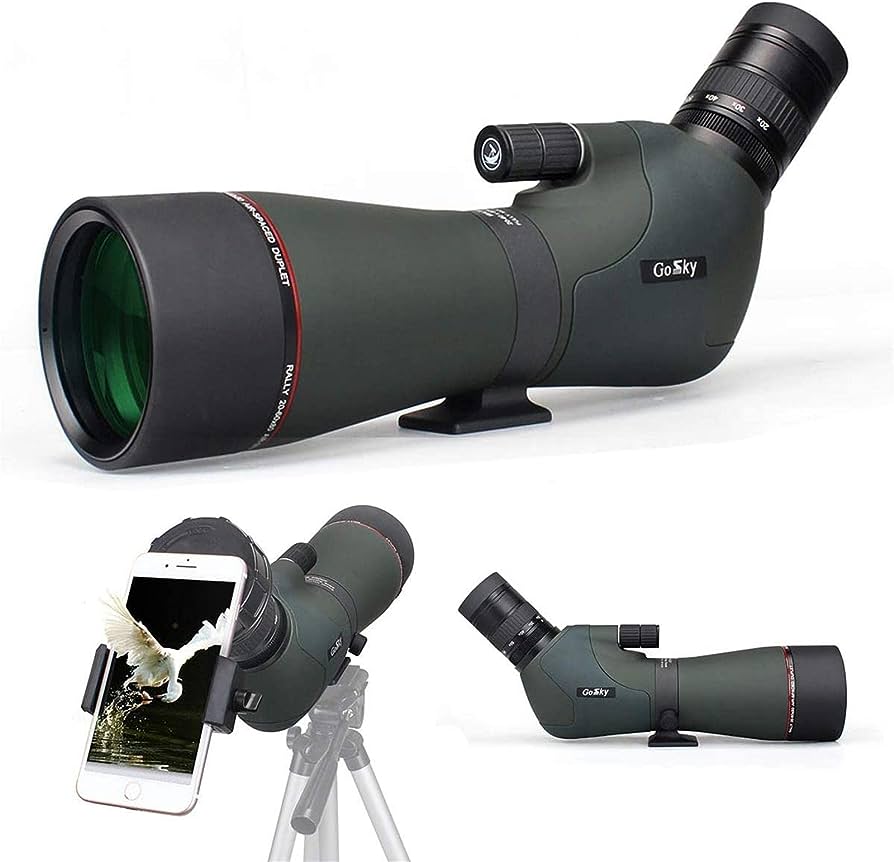
Case Studies and User Experiences
Case 1: Birdwatcher Turns Stargazer
John, an avid birdwatcher, decided to use his spotting scope for observing the night sky one evening. He was pleasantly surprised to find that his spotting scope, with its 80mm objective lens, was capable of providing clear views of the moon. He was even able to spot Jupiter and its four Galilean moons.
However, when he tried to observe distant stars and nebulae, his scope’s limitations became apparent. The lack of light-gathering ability and lower resolution, compared to a dedicated telescope, restricted him from viewing faint celestial objects.
Case 2: Amateur Astronomer on a Budget
Sarah, an amateur astronomer, couldn’t afford a high-end telescope, so she decided to use her spotting scope for stargazing. With a 70mm objective lens and a 60x magnification, she was able to observe the moon in detail and even the rings of Saturn. She found that the spotting scope, although not comparable to an astronomical telescope, was a decent alternative for her amateur stargazing.
Case 3: The Versatile Outdoorsman
Michael, an outdoorsman, often carries a spotting scope for wildlife observation during his camping trips. On a clear night, he decided to use his scope to observe the stars. While he found it tricky to track moving celestial bodies due to the inverted image, he was still able to enjoy basic stargazing. The spotting scope served as a compact, dual-purpose tool for him, useful in both day and night.
These experiences demonstrate that while spotting scopes have limitations, they can still offer a valuable and affordable start to stargazing for the novice astronomer or the occasional stargazer.
Conclusion:
A spotting scope can be used as a telescope as they share many features in common. While some advantages may exist when using one instrument or the other, the more important factor really is to find the device that will best suit your own needs and preferences. Optics technology continues to advance so it is important to keep an eye out for new developments.
With these modern advancements, spotting scopes are becoming ever more powerful while maintaining their compactness in size, providing astronomy enthusiasts with more flexibility and convenience compared to traditional telescopes. Whether you choose a spotting scope or telescope, take comfort in knowing you can do some quality stargazing with either of these pieces of equipment.
